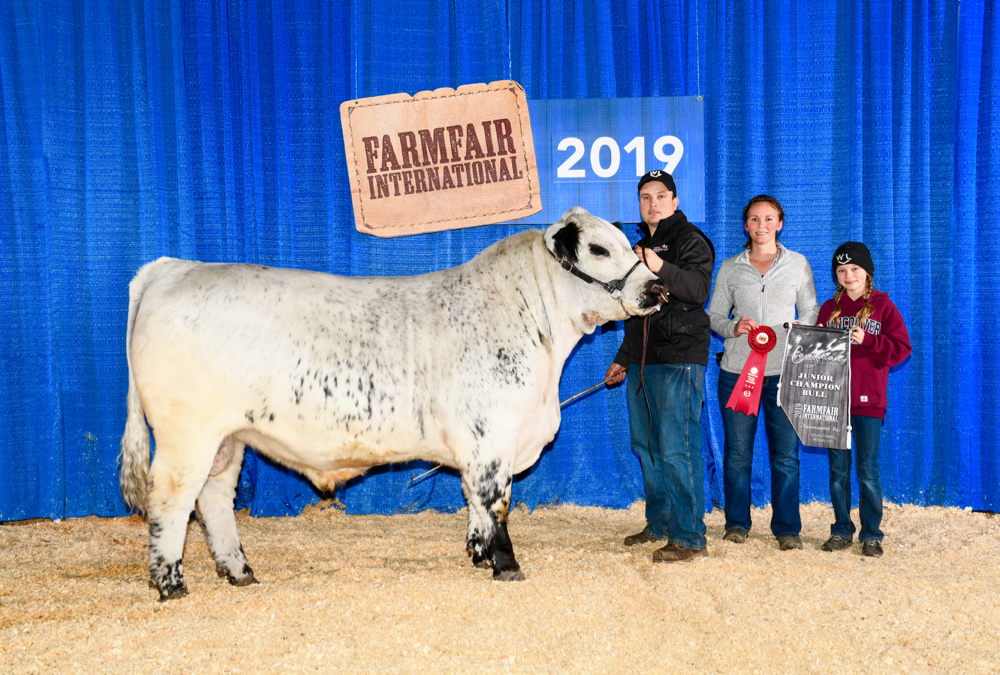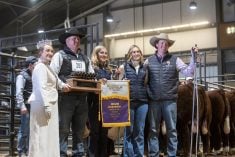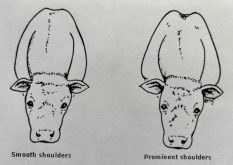There are many decisions which weigh into raising a saleable purebred bull. Do you focus on weight or conditioning? What kind of feeding program do you need to meet that goal? How do you keep them healthy and productive in the bitter winter conditions common across much of the Prairies?
Seedstock producers will likely tell you there’s no across-the-board winning formula for raising in-demand purebred bulls. However, it’s instructive to take a look at what they are doing. Two ranchers from Alberta and Saskatchewan offer a snapshot of how they produce purebred bulls which gain and retain customers.
Read Also

Body condition, nutrition and vaccination for brood cows
One of the remarkable events of the past century related to ranching has been the genetic evolution of brood cows….
Dan and Heather Brundige raise Speckle Park cattle near Bonnyville, Alta. (300 kilometres northeast of Edmonton), while Stephen and Kristin Wielgosz specialize in Charolais on their ranch near the community of Yellow Creek in east-central Saskatchewan. Both raise purebred and commercial herds of their preferred breeds.
The Brundiges jumped into the purebred game in 2013, just around the time Speckle Parks were starting to take off.
“We’ve been selling most of our bulls for the past four or five years right off the farm and every year we sell a few more,” says Dan Brundige.
Since starting in 2004, the Wielgosz’s Creek’s Edge Land and Cattle ranch has steadily grown from selling 10 or 12 purebred Charolais bulls to around 60 in recent years. Much of that demand has come from repeat customers as well as exposure at their annual bull sale, which has taken place in March over the past three years.

Although there are similarities and differences between the two ranchers’ methods, their strategies come down to three essential categories: setting breeding goals, developing quality feeding programs, and tackling local weather and logistical challenges.
Weighing in on weight
Both Brundige and Stephen Wielgosz subscribe to the “customer is always right” school of thought when it comes to purebred bull weight, and customers can vary greatly on what they’re looking for in the bulls they buy. At the same time, both producers have some general goals that have attracted customers.
Brundige tries to strike a compromise between bulls that are too fat or too lean, generally shooting for yearling bulls in the 1,100- to 1,200-pound range when they go up for sale.
“We don’t try to push them too hard,” he says. “We don’t want to get them so fat that come spring their feet or their livers are shot. But at the same time we want to be able to show customers that they have the sufficient yearling weight to produce.
“Obviously we try to sell sound bulls with good feet so customers aren’t phoning us back in a year or two saying their feet aren’t holding up to being out on pasture and breeding cows — doing what they’re supposed to be doing.”
Paying close attention to weaning and yearling weights helps assure buyers that a bull is going to produce well, says Brundige. “We look for that easy-fleshing trait, the ability to put on pounds economically without being pushed on a hard feed.”
Wielgosz does not have a specific yearling target weight in mind when raising his bulls. Instead, he focuses on growing them slowly, making sure he is always selecting sound cattle that work well for his customers.
“Not every bull is going to have a sale day weight of 1,600 pounds. Some of them are just not made that way,” he says.
“We want them to look developed but not over-conditioned.”
Banking on brown ‘super oats’
Feeding programs are crucial to raising the kind of purebred sires customers are looking for. Brundige has been experimenting with different blends of grain, oats and protein supplements since he started Wolf Lake Speckle Park ranch. He’s included brown oats in his feed in recent years.
Wielgosz grazes his purebred cow-calf pairs on 11 quarters of tame and native pasture before weaning the bulls in the yard for a few weeks in September. Then — weather permitting — he turns them back on 80 acres of pasture until November.
“We leave them out there as long as we can,” he says. “We think it is healthy for the bulls to have space and move around and graze as long as possible.”

Once in the yard, Wielgosz switches the bulls’ feed over to a silage-based total mixed ration. “We put cereal silage, a protein supplement with a mineral package, whole oats and hay into that ration. We work with a nutritionist to balance it all and we go from there.”
Both Brundige and Wielgosz feed their purebred bulls CDC Super Oats, a brown oat featuring — according to its marketers — nutritional value on par with barley and a lack of the poorly digestible hull associated with oats in general.
Brundige started mixing these oats in with barley last year and says he has seen good gains on his bulls so far.
“What’s nice about them is they have kind of a lighter hone and you can actually feed them without rolling. The bulls are able to better process that oat and get a little higher protein content as well.
“I buy them from an Angus breeder,” Brundige says. “He told me he had been feeding his bulls a lot of prepared feed and pellets but he found he was having a hard time getting his bulls to semen test in the springtime. He switched over to these oats and the semen tests improved. He is still getting some gains on those bulls.”
Wielgosz also enjoys the fact that he doesn’t have to process the oats. “Because of the partially digestible hull, they can get all of the nutrients out of them so that’s a big plus.” he says.
“I think their energy level is a little bit higher than on our regular oats and they’re safer than barley because of their lower starch content. Also, our customers like to hear that we use oats.”
Cold weather and feed availability challenges
Cold winters are one of the biggest challenges producers face when raising bulls on the Prairies. The Brundige and Wielgosz ranches are no exception. Temperature fluctuations such as those seen in Wielgosz’s area in recent years have further complicated matters.
“Two weeks ago it was in the -20s with a big wind chill and now it’s down to -5. We decrease or increase our rations as necessary but we maintain the same percentage of content,” he says.
Of course, feed is not the only consideration — animals need to stay warm as well. Wielgosz winters his bulls in pens with lots of straw.
“We had some customers from southwest Saskatchewan come up and they couldn’t believe how much straw we have. We want to make sure we’re doing the best job we can to give them enough protection so they don’t risk frostbite or have problems with their testicles.”
Although much of northern Alberta was consumed with drought in 2019, a large portion of the rest of the province faced the opposite problem: too much precipitation. Although Brundige says feed availability in his area has been decent for the past several years, last year’s wet conditions placed hay at a premium price-wise and its quality — at times — at a disadvantage.
“A lot of the people in this area — almost the majority now — have switched to wrapping their hay in haylage rather than trying to get their hay up and bale it dry,” says Brundige. “It seems the windows to get dry hay put up between rains are getting pretty short.”
Some remote communities across the Prairies face feed challenges due to a lack of nearby mills and supplement retailers. With a feed mill only 45 minutes away in Humboldt, that’s not a problem for Wielgosz. However, in Rose Valley, Sask., where he grew up (about 100 kilometres southeast of Yellow Creek as the crow flies) and started his Charolais herd with his dad, it was a different story.
“Our proximity isn’t bad but further east where I grew up you are looking at quite a long distance from the nearest feed mill. We are pretty fortunate here.”

















